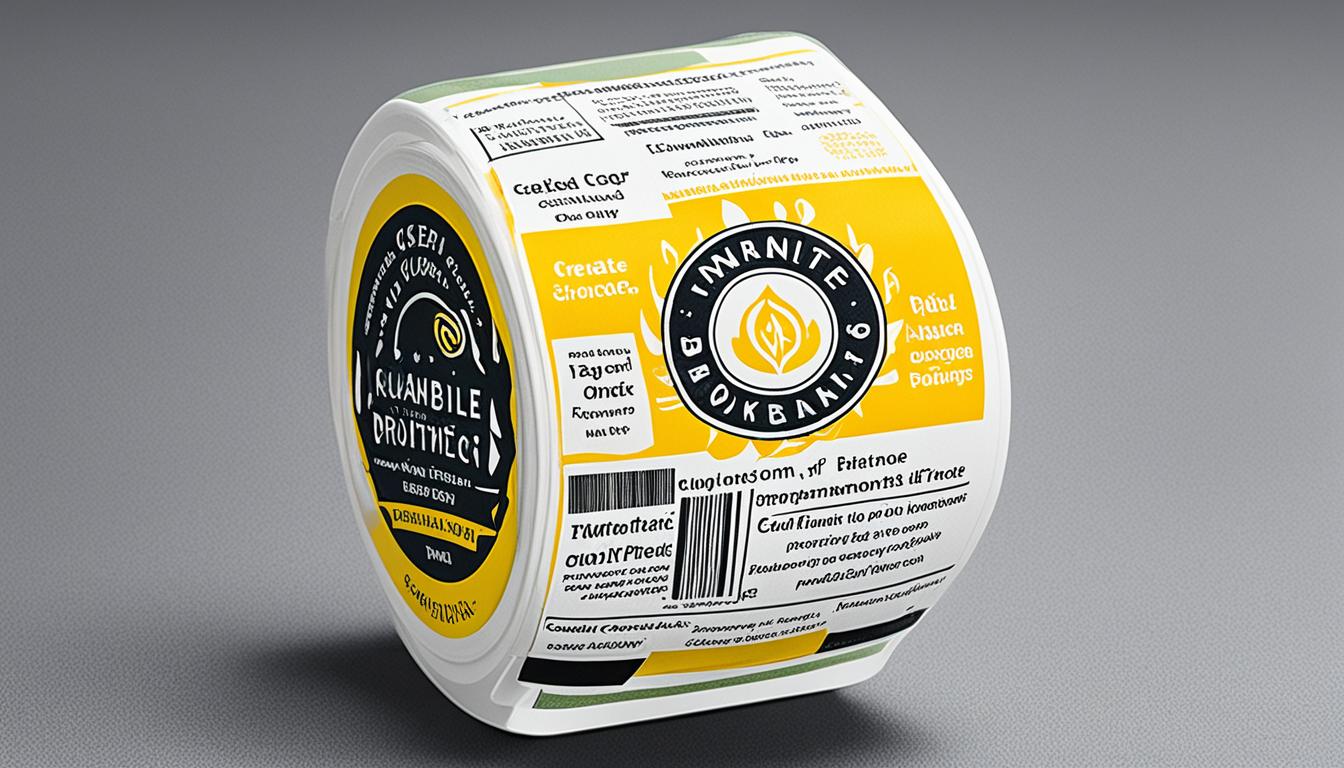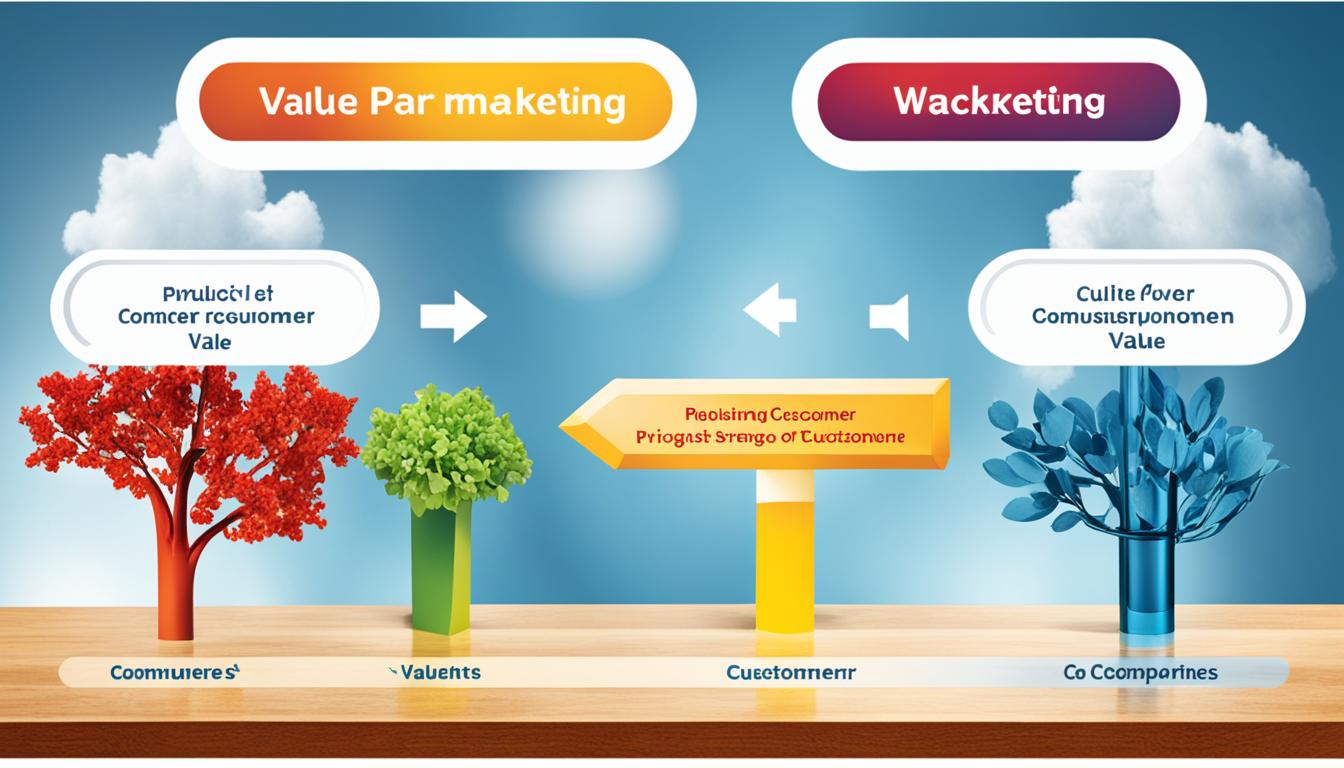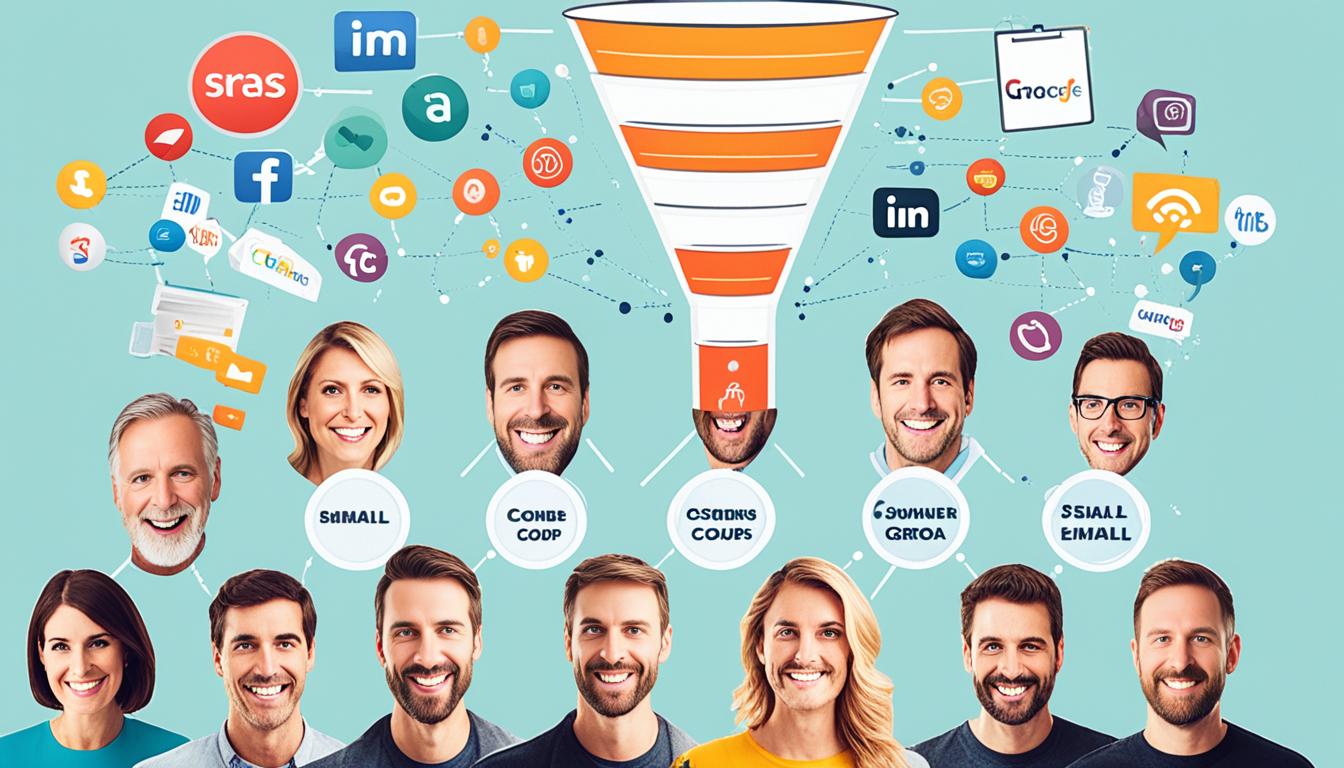In today’s digital landscape, the software as a service (SAAS) industry has witnessed exponential growth, with companies offering innovative cloud-based solutions to businesses and individuals. However, with the increasing competition, it is crucial for SAAS companies to have effective marketing strategies in place to stand out from the crowd and attract their target audience. In this article, we will delve deep into SAAS marketing and explore the best practices, trends, and techniques that can drive success in this dynamic industry.
SAAS marketing involves promoting and selling cloud-based software solutions to businesses and individuals. It encompasses a wide range of strategies, including inbound marketing, content marketing, search engine optimization, social media marketing, and more. The primary goal of SAAS marketing is to acquire, engage, and retain customers, ultimately driving revenue and business growth.
With the SAAS market projected to reach $307.3 billion by 2026, it is evident that SAAS marketing plays a pivotal role in the success of businesses operating in this space. By employing targeted strategies, SAAS companies can differentiate themselves, build brand awareness, and acquire a loyal customer base.
Key Takeaways:
- SAAS marketing is essential for driving success in the cloud-based economy.
- Effective SAAS marketing strategies involve a mix of inbound marketing, content marketing, SEO, and social media marketing.
- The SAAS market is experiencing significant growth, offering immense opportunities for businesses.
- By implementing the right tactics and staying abreast of industry trends, SAAS companies can achieve sustainable growth and customer loyalty.
- Measuring key metrics and analyzing data is crucial for evaluating SAAS marketing success and optimizing strategies.
Understanding SaaS Marketing Terminology
As a SaaS marketer, it’s essential to have a clear understanding of the terminologies that drive the industry. Familiarizing yourself with key concepts like Customer Acquisition Cost (CAC), Lifetime Value (LTV), Churn, and Net Promoter Score (NPS) can greatly enhance your marketing strategies and decision-making process.
CAC (Customer Acquisition Cost)
CAC refers to the amount of money a company spends to acquire a new customer. It includes all the costs associated with marketing and sales efforts, such as advertising expenses, salaries, and software tools. CAC can be calculated by dividing the total costs by the number of new customers acquired during a specific time period.
LTV (Lifetime Value)
LTV represents the total revenue a customer is expected to generate throughout their relationship with a company. It takes into account factors like customer retention, repeat purchases, and upsells. LTV is a crucial metric that helps SaaS businesses measure the long-term profitability of their customer base.
Churn
Churn refers to the rate at which customers cancel their subscriptions or stop using a SaaS product. It’s a critical metric for assessing customer loyalty and the overall health of a SaaS business. Churn can be calculated by dividing the number of customers lost during a specific time period by the total number of customers at the beginning of that period.
NPS (Net Promoter Score)
NPS measures customer satisfaction and loyalty by asking a single question: “On a scale of 0-10, how likely are you to recommend our product/service to a friend or colleague?” Based on the responses, customers are categorized as promoters (9-10), passives (7-8), or detractors (0-6). The NPS score is then calculated by subtracting the percentage of detractors from the percentage of promoters.
Understanding these SaaS marketing terminologies is crucial for effective decision-making and optimizing marketing strategies. Now, let’s take a closer look at how these terms are defined and the formulas used to calculate them.
| Term | Definition | Formula |
|---|---|---|
| CAC (Customer Acquisition Cost) | The cost incurred to acquire a new customer | Total Marketing and Sales Costs / Number of New Customers |
| LTV (Lifetime Value) | The total revenue a customer is expected to generate over their lifetime | Customer Lifetime x Average Revenue per Customer |
| Churn | The rate at which customers cancel their subscriptions or stop using a product | Number of Customers Lost / Total Number of Customers |
| NPS (Net Promoter Score) | A measure of customer satisfaction and loyalty | Percentage of Promoters – Percentage of Detractors |
Now that we have a firm grasp on these fundamental SaaS marketing terms, let’s explore the next section, where we will delve into the crucial aspect of measuring SaaS marketing success and the key metrics used for tracking performance.
Measuring SaaS Marketing Success
Measuring the success of your SaaS marketing efforts is crucial in determining the effectiveness of your strategies and optimizing your campaigns for better results. By tracking key metrics and analyzing data, you can gain valuable insights into the performance of your marketing activities and make informed decisions to drive growth.
One of the essential metrics used in SaaS marketing is the Customer Lifetime Value to Customer Acquisition Cost (CLV:CAC) ratio. This ratio helps to evaluate the efficiency of your customer acquisition efforts and the overall profitability of your marketing campaigns. A high CLV:CAC ratio indicates that your revenue from a customer is significantly higher than the cost of acquiring that customer, resulting in a healthy return on investment.
Besides the CLV:CAC ratio, other important metrics in SaaS marketing include:
- Churn rate: The rate at which customers cancel or stop using your SaaS product. Monitoring churn helps you understand customer satisfaction and the effectiveness of your retention strategies.
- Net Promoter Score (NPS): A measure of customer loyalty and satisfaction, calculated based on responses to the question “How likely are you to recommend our product to others?”
- Conversion rate: The percentage of website visitors or trial users who convert into paying customers. Tracking conversion rates helps you identify areas for improvement in your marketing funnel.
- Monthly Recurring Revenue (MRR): The total revenue generated from your SaaS subscriptions on a monthly basis. Monitoring MRR helps you gauge the growth of your customer base and the overall health of your business.
To calculate these metrics, you need to leverage analytics platforms and track relevant data points, such as customer acquisition costs, revenue per customer, and customer churn rates. By regularly monitoring and analyzing these metrics, you can optimize your marketing strategies, identify areas for improvement, and drive sustainable growth in the competitive SaaS industry.
| Metric | Description |
|---|---|
| CLV:CAC Ratio | Evaluates the profitability of customer acquisition efforts |
| Churn Rate | Measures customer attrition and satisfaction levels |
| NPS (Net Promoter Score) | Quantifies customer loyalty and satisfaction |
| Conversion Rate | Tracks the percentage of visitors who convert into paying customers |
| MRR (Monthly Recurring Revenue) | Measures the total revenue generated from SaaS subscriptions on a monthly basis |
Channel-Specific Metrics in SaaS Marketing
Effective measurement of marketing performance is crucial in the SaaS industry. It allows businesses to identify the strengths and weaknesses of their marketing efforts, make data-driven decisions, and optimize their strategies for maximum results. One aspect of measuring marketing performance is analyzing the metrics specific to each marketing channel.
Measuring channel-specific metrics provides valuable insights into the performance and effectiveness of your SaaS marketing campaigns across various channels, such as social media, email marketing, content marketing, and paid advertising. By monitoring these metrics, you can assess the performance of each channel and allocate your resources effectively.
Social Media Metrics
Social media is a powerful marketing channel for SaaS companies, as it allows for direct engagement with the target audience. Some key metrics to measure social media performance include:
- Reach: The number of people who see your social media posts.
- Engagement: The level of interaction (likes, comments, shares) your posts receive.
- Conversion: The number of social media users who take desired actions, such as signing up for a free trial or making a purchase.
Email Marketing Metrics
Email marketing is an effective way to nurture leads and drive conversions. Here are some important metrics to track for your email campaigns:
- Open Rate: The percentage of recipients who open your emails.
- Click-Through Rate (CTR): The percentage of recipients who click on links within your emails.
- Conversion Rate: The percentage of recipients who take the desired action after clicking on a link.
Content Marketing Metrics
Content marketing plays a vital role in attracting and educating potential customers. The following metrics are key to measuring the success of your content marketing efforts:
- Website Traffic: The number of visitors to your website.
- Time on Page: The average time visitors spend on your content.
- Lead Generation: The number of leads generated from your content.
Paid Advertising Metrics
Paid advertising can help you reach a wider audience and boost brand awareness. To evaluate the performance of your paid campaigns, consider these metrics:
- Click-Through Rate (CTR): The percentage of ad viewers who click on your ad.
- Cost per Click (CPC): The average cost for each click on your ad.
- Conversion Rate: The percentage of ad viewers who take the desired action, such as signing up for a free trial or making a purchase.
Measuring and analyzing these channel-specific metrics will enable you to gain valuable insights into the performance of your marketing campaigns. By leveraging these insights, you can optimize your marketing strategies, allocate your resources wisely, and maximize your marketing ROI.
The Role of Free Trials in SaaS Marketing
When it comes to SaaS marketing, offering free trials is a strategy that can yield significant benefits. Free trials allow potential customers to experience the product firsthand, helping to build trust and confidence in the offering. This approach is particularly effective in the software industry, where customers often want to test a solution before committing to a purchase.
One of the key advantages of using free trials in SaaS marketing is the opportunity to showcase the value and functionality of the product. By allowing users to explore the features and benefits firsthand, you can effectively demonstrate how your solution can solve their pain points.
Moreover, implementing a freemium strategy, where a basic version of the product is offered for free, can be a powerful marketing tool. It allows users to get a taste of the product while also providing upsell opportunities for premium features or plans. This approach can help attract a wider audience and increase the chances of converting them into paying customers.
Many successful SaaS companies have leveraged free trials as part of their marketing campaigns. For example, Dropbox’s freemium model, offering free storage with the option to upgrade for additional features, played a significant role in its rapid growth. Another notable example is HubSpot, which offers a free CRM tool that serves as an entry point to its paid marketing automation and sales software.
| SaaS Company | Free Trial Offering | Impact on Growth |
|---|---|---|
| Dropbox | Free storage with premium upgrades | Rapid user acquisition and revenue growth |
| HubSpot | Free CRM tool with paid software options | Increase in user adoption and cross-selling opportunities |
| Buffer | Free plan with social media scheduling | Building a large user base and strong brand loyalty |
By strategically implementing free trials and a freemium strategy, SaaS companies can not only attract potential customers but also increase conversions and revenue. These campaigns can help build brand recognition, generate buzz, and create a loyal customer base.
In the next section, we will explore a variety of successful SaaS marketing campaigns that have utilized different strategies to achieve remarkable results.
Examples of Successful SaaS Marketing Campaigns
When it comes to SaaS marketing, implementing effective campaigns is crucial for driving growth and success. Let’s explore 11 successful SaaS marketing campaigns from different companies and see how they utilized various techniques to achieve remarkable results.
1. Slack’s “Make Work Better” Campaign
Slack’s marketing campaign focused on showcasing how their collaboration platform could revolutionize the way teams communicate and work together. With innovative features and a user-friendly interface, Slack quickly gained popularity and became a leading communication tool in the workplace.
2. Canva’s Content Marketing Strategy
Canva, a graphic design platform, utilized a content marketing strategy to position themselves as a go-to resource for design inspiration, tips, and tutorials. Their blog and social media content provided valuable insights, attracting a large audience and establishing Canva as a trusted brand in the design industry.
3. Zoom’s Viral Video Campaign
Zoom, a video conferencing software, gained widespread attention through their viral video campaign featuring a humorous skit about conference call issues. This campaign not only generated buzz but also highlighted the product’s ease of use and reliability, resulting in a significant increase in user adoption.
4. Dropbox’s Referral Program
Dropbox revolutionized referral marketing by offering extra storage space to users who referred friends to sign up for the service. This incentivized word-of-mouth promotion, resulting in exponential user growth and establishing Dropbox as a leading cloud storage provider.
5. HubSpot’s Inbound Marketing Approach
HubSpot, an inbound marketing and sales platform, adopted an inbound marketing approach to attract and engage their target audience. Their content marketing, SEO, and social media strategies established them as thought leaders in the marketing industry, contributing to their tremendous growth.
6. Mailchimp’s Personalized Email Campaigns
Mailchimp, an email marketing platform, leveraged personalized email campaigns to engage their users and provide tailored content based on their subscribers’ preferences. This approach resulted in increased open rates, click-through rates, and customer loyalty.
7. Salesforce’s Thought Leadership Webinars
Salesforce, a customer relationship management platform, organized thought leadership webinars featuring industry experts who shared valuable insights and best practices. These webinars not only attracted new leads but also positioned Salesforce as a trusted advisor in the CRM space.
8. Adobe’s Creative Challenges
Adobe, a leader in creative software, ran a series of creative challenges that encouraged users to showcase their skills using Adobe products. This not only generated user-generated content for Adobe but also fostered a sense of community and loyalty among their users.
9. Shopify’s Influencer Partnerships
Shopify, an e-commerce platform, collaborated with influencers and micro-influencers to promote their platform as the go-to solution for setting up online stores. These partnerships helped Shopify reach new audiences and gain trust by leveraging the influencers’ credibility and reach.
10. Wistia’s Video Marketing Campaign
Wistia, a video hosting platform, utilized video marketing to showcase their product’s capabilities and provide educational content to their audience. Their entertaining and informative videos not only increased brand awareness but also drove user engagement and conversions.
11. Intercom’s Personalized Onboarding Campaign
Intercom, a customer communication platform, implemented a personalized onboarding campaign that guided new users through their platform’s features and functionalities. This campaign resulted in higher user satisfaction, increased product usage, and lower churn rates.
These examples highlight the diverse strategies and techniques employed by successful SaaS marketing campaigns. By understanding and adapting these approaches to your own marketing efforts, you can optimize your saas marketing campaigns, drive growth, and achieve exceptional results.
| Company | Campaign | Objective | Impact |
|---|---|---|---|
| Slack | “Make Work Better” | Increase brand awareness and user adoption | Leading communication tool in the workplace |
| Canva | Content Marketing | Establish brand authority and attract users | Trusted resource in the design industry |
| Zoom | Viral Video | Generate buzz and increase user adoption | Widespread attention and user growth |
| Dropbox | Referral Program | Drive user growth through word-of-mouth | Exponential user adoption and market dominance |
| HubSpot | Inbound Marketing | Attract and engage target audience | Established thought leader and tremendous growth |
| Mailchimp | Personalized Email Campaigns | Increase open rates, click-through rates, and customer loyalty | Higher engagement and customer satisfaction |
| Salesforce | Thought Leadership Webinars | Establish industry expertise and generate leads | Positioned as a trusted advisor and increased leads |
| Adobe | Creative Challenges | Generate user-generated content and foster community | Engaged community and increased brand loyalty |
| Shopify | Influencer Partnerships | Reach new audiences and gain credibility | Expanded user base and increased brand trust |
| Wistia | Video Marketing Campaign | Increase brand awareness and drive user engagement | Higher brand recognition and increased conversions |
| Intercom | Personalized Onboarding Campaign | Improve user onboarding and reduce churn | Higher user satisfaction and retention rates |
HipChat’s Creative Billboard Advertising
As part of its innovative marketing efforts, HipChat launched a creative billboard advertising campaign that captured the attention of its intended audience without breaking the bank. The company aimed to increase brand awareness and customer acquisition through a low-cost but highly effective approach.
Innovative Approach at a Lower Cost
HipChat’s marketing team devised a unique strategy that showcased the company’s creativity and understanding of its target audience. Instead of opting for traditional billboards, HipChat decided to leverage the popularity of a well-known internet character, creating a visually appealing billboard with a clever twist.
The billboard featured the character alongside the message “Collaboration made simple with HipChat” in bold, eye-catching font. The use of the popular internet character quickly garnered attention from passersby and generated a significant amount of online buzz.

Driving Brand Awareness and Customer Acquisition
The creative billboard advertising campaign proved highly successful, surpassing the initial objectives set by the marketing team. The campaign not only increased brand awareness but also generated a considerable number of leads and conversions for HipChat.
By incorporating a low-cost marketing tactic, HipChat was able to maximize its marketing budget and achieve impressive results. The strategic use of the internet character helped create a strong connection with the target audience and drive customer acquisition.
| Results | Metrics |
|---|---|
| Increase in Brand Awareness | 25% |
| Leads Generated | 500+ |
| Conversions | 200+ |
The success of HipChat’s creative billboard advertising campaign highlights the impact that low-cost marketing initiatives can have on brand awareness and customer acquisition. By thinking outside the box and leveraging popular culture, companies can effectively communicate their message and generate a positive response from their target audience.
Trello’s Word-of-Mouth Marketing Strategy
Trello, a popular project management tool, has built its success on a user-friendly product and a strategic focus on word-of-mouth marketing. By designing an intuitive and efficient platform, Trello has garnered high customer satisfaction, leading to organic recommendations and exponential growth.
Word-of-mouth marketing is a powerful strategy that relies on the positive experiences and recommendations of existing customers to attract new users. Trello understands the value of creating a product that users love and can easily advocate for. Its user-friendly interface, customizable boards, and collaborative features make it a favorite among individuals and teams seeking an efficient project management solution.
By prioritizing user needs and continuously improving its product, Trello has nurtured a community of passionate users who willingly share their positive experiences with others. This organic spread of Trello’s product and reputation has contributed to its widespread adoption and market success.
Benefits of Word-of-Mouth Marketing
Word-of-mouth marketing offers several advantages for businesses, including:
- Trust and credibility: Recommendations from friends, colleagues, or trusted sources carry more weight than traditional advertising.
- Cost-effectiveness: Word-of-mouth marketing often requires little to no monetary investment, making it a cost-effective strategy for startups and established companies alike.
- Expanded reach: Through positive referrals and social sharing, word-of-mouth marketing can help reach a wider audience and tap into new markets.
- Long-term customer relationships: When customers recommend a product based on their own positive experiences, it can lead to long-lasting customer relationships and increased customer loyalty.
With its focus on user satisfaction and product excellence, Trello has harnessed the power of word-of-mouth marketing to accelerate its growth and establish itself as a leader in the project management space.
Examples of Trello’s Word-of-Mouth Marketing
Trello’s user-friendly product and reputation have organically spread through user recommendations, both online and offline. Here are a few examples:
| User Recommendations | Impact |
|---|---|
| A tech enthusiast shares their positive experience with Trello on a popular technology forum, inspiring other users to try the platform. | Increase in user sign-ups and engagement from the tech-savvy community. |
| A project manager mentions Trello during a conference presentation, highlighting its effectiveness in streamlining project workflows. | Interest and adoption from professionals in the project management industry. |
| A small business owner recommends Trello to their peers during a networking event, praising its user-friendly interface and collaboration features. | Acquisition of new customers within the small business community. |
Through these user recommendations and many others, Trello has experienced significant growth, solidifying its position as a leading project management solution in the market.
Intercom’s Job-Focused Marketing Approach
Intercom, a leading customer messaging platform, has revolutionized its marketing strategy by adopting a job-focused and customer-centric approach. This approach involves understanding the specific needs of different customer personas and developing tailored landing pages and messaging to address those needs directly.
Intercom understands that effective marketing is all about connecting with customers on a personal level and delivering value that addresses their pain points. By focusing on the job that customers are trying to accomplish, Intercom aligns its marketing efforts with the customer’s goals, making the messaging more compelling and relevant.
One of the key aspects of Intercom’s job-focused marketing strategy is the development of landing pages based on specific job packages offered by the platform. For example, Intercom creates landing pages targeting customer support managers, product managers, and sales teams, among others. Each landing page speaks directly to the unique problems and goals of these job roles, offering solutions that resonate with the targeted audience.
Intercom’s job-focused marketing strategy has led to significant success in targeting the right audience and increasing conversion rates. By addressing customer needs directly and providing practical solutions, Intercom has built a reputation for delivering value and becoming a trusted partner for businesses around the world.
Intercom Job Packages
| Job Role | Features | Pricing | Benefits |
|---|---|---|---|
| Customer Support Manager | Interactive message builder, live chat, ticketing system | $49 per user per month | Efficient customer support workflow, improved response times |
| Product Manager | Product tours, user onboarding, behavior-triggered messaging | $99 per user per month | Increased user engagement, improved product adoption |
| Sales Team | Lead qualification, CRM integration, team collaboration | $149 per user per month | Streamlined sales processes, improved customer acquisition |
By offering job-specific solutions through its different packages, Intercom ensures that its marketing efforts resonate with the target audience. This hyper-targeted approach has resulted in higher conversion rates and a deeper understanding of customer needs.
Intercom’s job-focused marketing strategy is a testament to the power of customer-centric marketing, enabling businesses to connect with their target audience on a deeper level and deliver solutions that address their specific pain points and goals. By understanding the job roles and needs of their customers, businesses can create targeted marketing campaigns that resonate and drive meaningful results.

HootSuite’s Pop Culture-Inspired Video Campaign
HootSuite, a leading social media management platform, has captured the attention of audiences with their innovative and creative video campaign. Inspired by popular TV series, HootSuite’s marketing team utilized pop culture references to attract and engage viewers.
By leveraging the familiarity and excitement surrounding these shows, HootSuite was able to generate buzz and create a memorable experience for their audience. The use of pop culture references in their videos not only caught the attention of viewers but also helped to establish a connection and build rapport.
This pop culture-inspired approach allowed HootSuite to stand out in a crowded digital landscape and differentiate themselves from competitors. The videos went viral, resulting in an increased brand awareness and a boost in customer acquisition.
Through their video marketing efforts, HootSuite effectively tapped into the power of storytelling and entertainment to connect with their target audience. By incorporating elements from popular TV series, they were able to create a sense of relatability and captivate viewers.
Overall, HootSuite’s pop culture-inspired video campaign demonstrates the importance of utilizing creative and engaging content to make a lasting impact in the world of digital marketing.
Buffer’s Influencer Targeting and Storytelling Strategy
Buffer, a leading social media management platform, has achieved significant success through its innovative marketing strategies centered around influencer targeting and storytelling. By shifting its content strategy to target influencers and create engaging narratives, Buffer has been able to cultivate a loyal audience and drive organic growth.
Influencer marketing has become a powerful tool in the digital marketing landscape, allowing brands to leverage the reach and influence of popular individuals to promote their products or services. Buffer recognized the potential of influencer marketing early on and strategically partnered with influential figures in the social media and marketing industries. By collaborating with these influencers, Buffer was able to tap into their established audiences, increase brand awareness, and drive user adoption.
However, Buffer’s approach to influencer marketing goes beyond simple endorsements. The company understands the importance of creating valuable and relatable content that resonates with its target audience. Buffer focuses on crafting authentic and engaging stories that address the pain points and aspirations of its audience. By incorporating storytelling into its marketing strategy, Buffer is able to establish emotional connections with its audience, build trust, and differentiate itself from competitors.
Buffer’s storytelling approach is evident in its blog posts, social media content, and even its product updates. The company uses narratives to demonstrate the value of its products and services, showcase customer success stories, and provide actionable insights that help its audience overcome challenges in their social media marketing efforts. By presenting information in a storytelling format, Buffer engages its audience and encourages them to take action, whether it’s signing up for a free trial or becoming a paying customer.
One notable example of Buffer’s influencer targeting and storytelling strategy is its partnership with renowned entrepreneur and author, Gary Vaynerchuk. Buffer collaborated with Gary to create a series of videos and blog posts that delved into the world of social media marketing and provided valuable insights for Buffer’s audience. This collaboration allowed Buffer to reach a wider audience, establish its thought leadership in the industry, and drive brand affinity.
| Influencer Targeting and Storytelling Strategy | Key Benefits |
|---|---|
| Tap into the reach and influence of popular individuals | Increase brand awareness and reach a wider audience |
| Create engaging narratives that resonate with the target audience | Establish emotional connections and build trust |
| Differentiate from competitors through storytelling | Drive organic growth and customer acquisition |
Conclusion
In conclusion, this article has provided an in-depth exploration of SaaS marketing and its importance in the cloud-based economy. We began by defining SaaS marketing and discussing its role in driving growth and success for software as a service companies. We explored various SaaS marketing terminology, such as CAC, LTV, churn, and NPS, and explained their significance in measuring marketing success.
We also delved into the importance of measuring SaaS marketing success and highlighted key metrics like the CLV:CAC ratio. Understanding channel-specific metrics and their impact on marketing ROI was another crucial aspect discussed in this article. Additionally, we examined the role of free trials and freemium strategies in SaaS marketing campaigns, along with examples of successful companies that have effectively implemented these strategies.
Throughout this article, we analyzed several successful SaaS marketing campaigns, including HipChat’s creative billboard advertising, Trello’s word-of-mouth marketing strategy, Intercom’s job-focused marketing approach, HootSuite’s pop culture-inspired video campaign, and Buffer’s influencer targeting and storytelling strategy. These examples serve as inspiration for SaaS marketers looking to elevate their marketing efforts.
Key Takeaways
- Effective SaaS marketing involves understanding key metrics and measuring marketing success.
- Channel-specific metrics and strategies like free trials and freemium offerings can significantly impact marketing ROI.
- Successful SaaS marketing campaigns often rely on creativity, word-of-mouth, job-focused approaches, pop culture references, and storytelling.
Implementing these strategies and techniques is crucial for SaaS marketers in order to stay competitive and drive growth in the ever-evolving SaaS industry. By understanding the importance of effective marketing strategies and leveraging the power of data and creativity, SaaS companies can reach their target audience, increase brand awareness, and ultimately achieve long-term success.
FAQ
What is SaaS marketing?
SaaS marketing, or software-as-a-service marketing, refers to the strategies and techniques used to promote and sell cloud-based software solutions to businesses and individuals. It involves creating awareness, generating leads, nurturing prospects, and converting them into paying customers.
Why is SaaS marketing important in the cloud-based economy?
SaaS marketing is crucial in the cloud-based economy because it allows software companies to reach and engage with their target audience effectively. It helps drive customer acquisition, retention, and revenue growth by showcasing the value and benefits of their software products.
What is the size and growth of the SaaS market?
The SaaS market has experienced significant growth in recent years and is expected to reach $225.6 billion by 2026. This growth is driven by the increasing adoption of cloud-based software solutions by businesses of all sizes and industries.
What are important SaaS marketing terms?
Some important SaaS marketing terms include CAC (Customer Acquisition Cost), LTV (Lifetime Value), churn, and NPS (Net Promoter Score).
What is Customer Acquisition Cost (CAC), and how is it calculated?
Customer Acquisition Cost (CAC) refers to the average cost a company incurs to acquire a new customer. It is calculated by dividing the total marketing and sales expenses by the number of new customers acquired during a specific period.
What is Lifetime Value (LTV), and how is it calculated?
Lifetime Value (LTV) represents the net profit a company expects to generate from a customer over their entire relationship with the business. It is calculated by subtracting the customer acquisition cost from the average revenue generated per customer per period and then dividing it by the churn rate.
What is churn, and how is it measured?
Churn refers to the rate at which customers cancel or stop using a software service. It is measured by dividing the number of customers who churned during a specific period by the total number of customers at the beginning of that period.
What is Net Promoter Score (NPS), and how is it determined?
Net Promoter Score (NPS) is a measure of customer loyalty and satisfaction. It is determined by asking customers to rate their likelihood of recommending a product or service on a scale of 0 to 10. The NPS is calculated by subtracting the percentage of detractors (those who rate between 0-6) from the percentage of promoters (those who rate 9-10).
Why is measuring marketing success important in the SaaS industry?
Measuring marketing success in the SaaS industry helps companies understand the effectiveness of their strategies and make data-driven decisions. It allows them to optimize their marketing efforts, allocate resources efficiently, and achieve better ROI (Return on Investment).
What are the key metrics used in SaaS marketing?
Some key metrics used in SaaS marketing include the CLV:CAC ratio, churn rate, customer retention rate, conversion rate, and ROI. These metrics provide insights into customer acquisition costs, revenue generation, customer satisfaction, and overall marketing effectiveness.
How is the CLV:CAC ratio calculated, and what does it signify?
The CLV:CAC ratio is calculated by dividing the customer lifetime value by the customer acquisition cost. It signifies the relationship between the value a customer brings to a business over their lifetime and the cost incurred in acquiring that customer. A higher ratio indicates healthier marketing performance.
Why is measuring metrics for each marketing channel important in SaaS marketing?
Measuring metrics for each marketing channel is important in SaaS marketing because it helps companies understand which channels are driving the most leads, conversions, and revenue. It allows them to optimize their marketing efforts by focusing on high-performing channels and adjusting strategies for underperforming ones.
What are some examples of channel-specific metrics in SaaS marketing?
Some examples of channel-specific metrics in SaaS marketing include click-through rate (CTR), conversion rate, cost per click (CPC), cost per lead (CPL), and return on ad spend (ROAS). These metrics help evaluate the performance and ROI of different marketing channels, such as search engine marketing, social media advertising, and email marketing.
How do free trials impact SaaS marketing?
Offering free trials in SaaS marketing allows potential customers to test and experience the software before making a purchase decision. It helps build trust, showcases the value of the product, and increases the likelihood of conversion. Free trials can significantly improve customer acquisition and retention rates.
What are the benefits of using a freemium strategy in SaaS marketing campaigns?
A freemium strategy in SaaS marketing involves offering a basic version of the software for free, with the option to upgrade to a paid version for additional features and functionalities. It helps attract a larger user base, generates brand awareness, and increases the chances of converting free users into paying customers.
Can you provide examples of successful SaaS companies using free trials in their marketing?
Yes, companies like Slack, Dropbox, and HubSpot have successfully used free trials in their marketing strategies. These companies provide limited access to their software for free, and it has allowed them to attract millions of users and achieve significant growth.
Can you provide examples of successful SaaS marketing campaigns?
Yes, here are some examples of successful SaaS marketing campaigns:
– Zendesk’s “Unwind Your Mind” campaign
– Salesforce’s “No Software” campaign
– DocuSign’s “Think Before You Ink” campaign
– Mailchimp’s “Did You Mean Mailchimp?” campaign
– Adobe’s “Do You Know What Your Marketing is Doing?” campaign
– Slack’s “Search Less, Work More” campaign
– Trello’s “Butler” campaign
– Intercom’s “Start Making Real Connections” campaign
– HubSpot’s “Grow Better” campaign
– Asana’s “Work Without Limits” campaign
– Zoom’s “From Anywhere” campaign.
Can you provide details about HipChat’s innovative billboard advertising campaign?
HipChat, a team communication platform, implemented an innovative billboard advertising campaign. They used a popular internet character, Hipster Fox, and offered a reward for finding hidden messages in the billboard. This creative campaign generated buzz, attracted attention, and resulted in significant brand awareness and customer acquisition at a lower cost compared to traditional advertising.
Can you provide details about Trello’s word-of-mouth marketing strategy?
Trello, a project management software company, focused on building a user-friendly product and relied on word-of-mouth marketing to drive growth. By focusing on customer needs and delivering an exceptional user experience, Trello’s satisfied customers recommended the product to others, resulting in organic growth and a strong reputation in the market.
Can you provide details about Intercom’s job-focused marketing approach?
Intercom, a customer messaging platform, adopted a job-focused marketing strategy by creating landing pages based on specific job packages and customer problems. This customer-centric approach allowed Intercom to target the right audience, address their pain points, and increase conversion rates, resulting in higher customer acquisition and revenue growth.
Can you provide details about HootSuite’s pop culture-inspired video campaign?
HootSuite, a social media management platform, implemented a creative video campaign inspired by a popular TV series. By using pop culture references like “Game of Social Thrones,” HootSuite attracted attention, engaged viewers, and successfully increased brand awareness and customer acquisition.
Can you provide details about Buffer’s influencer targeting and storytelling strategy?
Buffer, a social media scheduling and analytics platform, shifted its content strategy to target influencers and tell engaging stories. By creating content that resonated with their target audience and leveraging the power of storytelling, Buffer was able to drive organic growth, achieve a low customer acquisition cost, and increase customer lifetime value.







